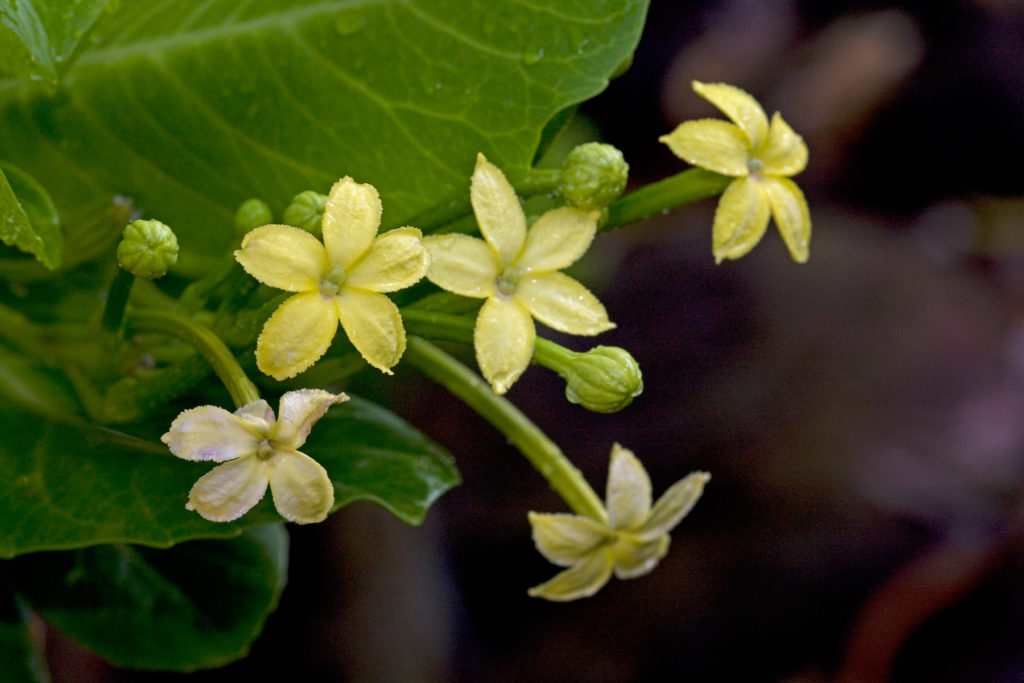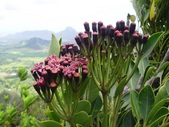Weathering the storms. . .
Our hearts go out to our participating institutions and conservation partners who suffered losses to plants and property in the wake of the recent hurricanes. These natural disturbances definitely have an ugly side, especially to our human-constructed landscapes. But how do natural landscapes and their rare plants weather the storms? The answer is a favorite of ecologists’ – it depends upon many things. Sometimes, we find that habitats with healthy native plant populations are more resilient and protect the coastlines better than modified habitats. And sometimes the destruction of native landscapes leaves an area vulnerable to aggressive interlopers. Let’s first look at Kaua‘i, 25 years after powerful hurricanes pounded the island.
Kaua‘i
The Upper Preserve of Limahuli on Kaua‘i is an extremely remote area and is only accessible by helicopter. It remained a pristine ecosystem until two powerful hurricanes, Iwa in 1982 and Iniki in 1992, denuded the area of a great deal of vegetation. At the same time, those hurricanes deposited non-native seeds throughout the area. One of the more serious weeds to establish itself was Clidemia hirta. It became a dominate shrub that took over those areas Iniki denuded, growing more quickly than native species could recover. Other aggressive plants that invaded and must be managed include the autograph tree (Clusea rosea), paperbark (Melaleuca quinquenervia), and Kahili ginger (Hedychium gardnerianum). There are ongoing efforts to restore the area to its original state.

From Kawika Winter at Limahuli:
“This past September 11 was the 25th anniversary of a direct hit by Hurricane Iniki on the island of Kauaʻi in the Hawaiian Archipelago. This is not an anniversary to celebrate as this Category 4 storm essentially blew down most of the forests on our island, the most biodiverse island in the Hawaiian Hotspot. The decimation, which befell our forest, precipitated the rapid extinction of some of our most beloved species such as Cyanea kuhihewa (a lobelia relative known only from a single population in Upper Limahuli Preserve) and the ʻŌʻō (Moho braccatus), one of our precious song birds, famous in Hawaiian lore. Twenty-five years later, many of our endemic species have yet to fully recover, and several dozen just cling to existence. There are 70 species here on the Plant Extinction Prevention list, which means they all have less than 50 remaining individuals in the wild. One of the reasons for this is that invasive species filled most of the massive gaps created in our forest from the hurricane. This ultimately turned continuous populations of endemic species into disparate stands or individuals, which induced a massive genetic bottleneck.
“As a means to prevent any more extinctions from occurring, the National Tropical Botanical Garden, in collaboration with Center for Plant Conservation, is in the process of creating conservation collections of these species by out-planting wild-collected seedlings into forest restoration scenarios. This is done so that these species will not only have the habitat they need to grow vigorously, but will also be close enough to each other to promote gene mixing. The hope is that we can help the gene pools of these species bounce back to a point where they will be evolutionarily competitive for 21st-century conditions. We have several success stories to tell in this regard. One of them, Polyscias bisatenuatta (image below) where only 13 older trees still exist, has now produced more than 6,000 seedlings due to our conservation and collection efforts. Many hundreds of these have been out-planted in restoration sites thus far, and they are doing amazingly well. There is hope for the future.”
